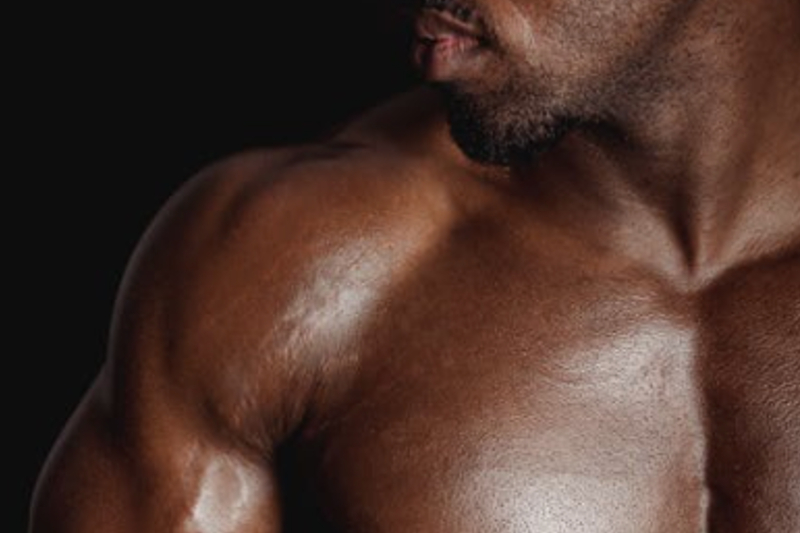
A pair of built, sizeable shoulders sitting on top of a guy’s torso is a telltale sign of someone who is not only aesthetic but functional as well. Strong and healthy shoulders are incredibly crucial for all of life’s tasks, especially as we age and begin to lose muscle density.
Shoulder injuries are disastrous, making even common daily tasks like carrying groceries painful. So, one of the best things that you can do is to stop neglecting your shoulders and make sure you do some of the best shoulder exercises to make them stronger, as well.
Luckily for you, we sat down and got some advice and a list of the best shoulder workouts from former Row House Master Coach, Gretchen Raddatz. “When you build stability, mobility, and flexibility in the muscles surrounding the shoulder joint, it keeps you injury-free,” said Raddatz.
Shoulder Anatomy — Joint and muscle
To help you get those large, 3D-rounded shoulders that will protect you from injury, we asked Raddatz to compile this step-by-step guide to the best shoulder workouts. These exercises can be incorporated into HIIT workouts for a full-body burn, or they can function as a stand-alone routine. To help you get the most out of your shoulder training, it’s important to understand some of the basic anatomy surrounding the shoulder joint, first.
These muscles are divided into two groups: extrinsic and intrinsic shoulder muscles. The extrinsic muscles include the trapezius, latissimus dorsi, rhomboids, and levator scapulae. The intrinsic muscles are the anterior, medial, and posterior deltoids, rotator cuff, and teres major. The exercises below are designed to hit all these muscles for an intense yet well-rounded shoulder workout. Adding the shoulder exercises into your weekly training will have you donning Death Star-like shoulders before you know it.
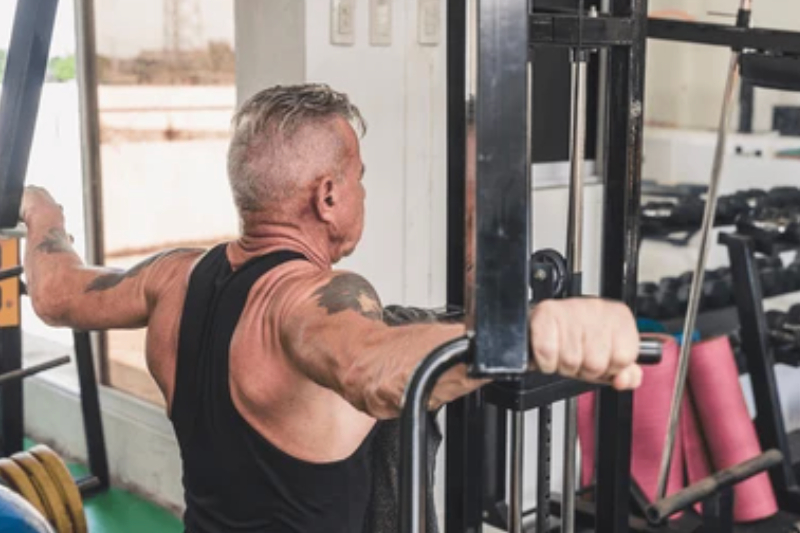
Machine reverse fly
Muscles targeted: Deltoid (posterior), trapezius, and rhomboids
Reps: 12 to 15
Sets: 2 to 3
All too often, we prioritize the front and lateral deltoid heads while neglecting the posterior deltoid heads. If you truly want to build 3D shoulders, you should start shoulder training by performing three sets of higher reps with lower rest times to pre-fatigue your shoulders. Using a machine, cable, or bands, if necessary, is a great way to keep the overall load minimal while forcing large amounts of blood into your shoulders, which is key to muscle growth.
Keep weight to a minimal amount, higher reps, and minimal rest time, around 30 seconds, to get your shoulder routine off to a great start.
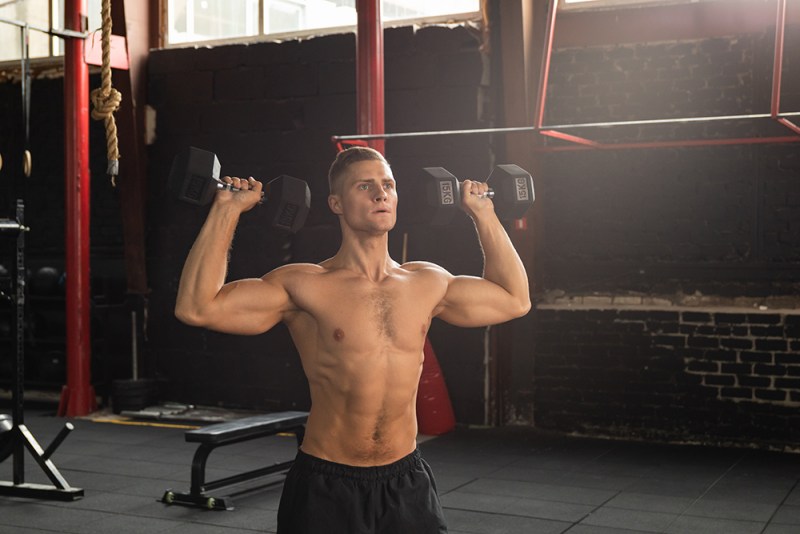
Overhead shoulder press
Muscles targeted: Deltoid (anterior, medial, and posterior) and trapezius
Reps: 12 to 15
Sets: 2 to 3
This exercise can be done standing or seated. With a dumbbell in each hand and holding the weights at the shoulders with an overhand grip, start with your feet hip-distance apart, keeping the back straight. Press up and bring the dumbbells together over your head, then slowly lower back to the starting position.
“Avoid arching your back by keeping the abdomen braced, glutes contracted during the press, and tipping the pelvis inward slightly,” Raddatz told us. “Lower the weights only to your shoulders.”
Once your shoulders are fit and used to the weight, you can add on the pounds and make this a low-rep, high-return muscle builder, but start lighter to stay safe.
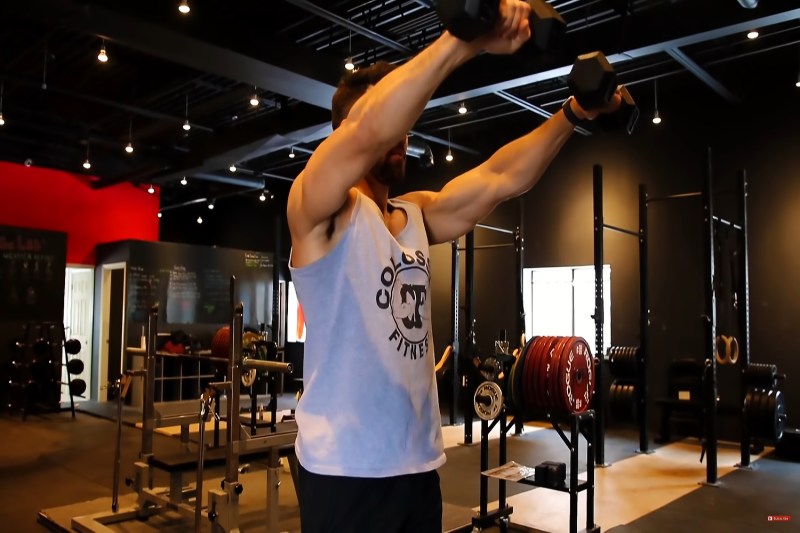
Front delt raise
Muscles targeted: Anterior deltoid, medial/middle deltoid, and trapezius
Reps: 12 to 15
Sets: 2 to 3
With light weights, begin this exercise by standing with your feet about hip-distance apart. Holding a dumbbell in each hand, palms facing back — horizontal to the thighs — slowly raise your arms out in front of you until they are parallel to the floor, maintaining a small bend in the elbow. Hold, then lower slowly with control. Repeat.
“Avoid using momentum, and take your time on the way up and down,” Raddatz recommended. ” [Your] wrists should remain neutral, not bent.”

Lateral delt raise
Muscles targeted: Medial/middle deltoid, rotator cuff, and trapezius
Reps: 12 to 15
Sets: 2 to 3
Again, use light weights for this exercise. Begin standing with your feet about hip-distance apart and a dumbbell in each hand, palms facing in toward the body alongside the thighs with a slight bend in the elbow. Begin lifting the weights up and out to your sides. Once the arms are parallel to the floor (about even with your shoulder), bring the weight back down slowly with control. Repeat.
A note on form: Remember to brace the core, keep feet hip-distance apart, and pull your shoulders back and down. “If you rotate your hands, raising your pinkies slightly higher than your thumbs, you’ll feel more activation in the lateral deltoid muscle,” Raddatz said.

Bent-over reverse fly
Muscles targeted: Posterior deltoid, trapezius, and rhomboids
Reps: 12 to 15
Sets: 2 to 3
The reverse fly is as much a back exercise as a shoulder exercise, but it can strengthen the lower muscles of the shoulder group and help support and protect your entire shoulder while also helping you build up that coveted V-shape. So bang ’em out.
Standing with feet shoulder-width apart, hinge forward at the hips to a 45-degree angle, keeping a slight bend in the knees. Grab a dumbbell in each hand, palms facing in. Lift the weights out to the sides of your body, squeezing the shoulder blades together and keeping a slight bend in the elbow. Bring the weights back down gently.
“Look down and maintain alignment through the neck and spine so you are not straining your neck,” Raddatz explained. “Avoid swinging/jerking the weights to bring them up. Keep it slow, steady, and smooth.”
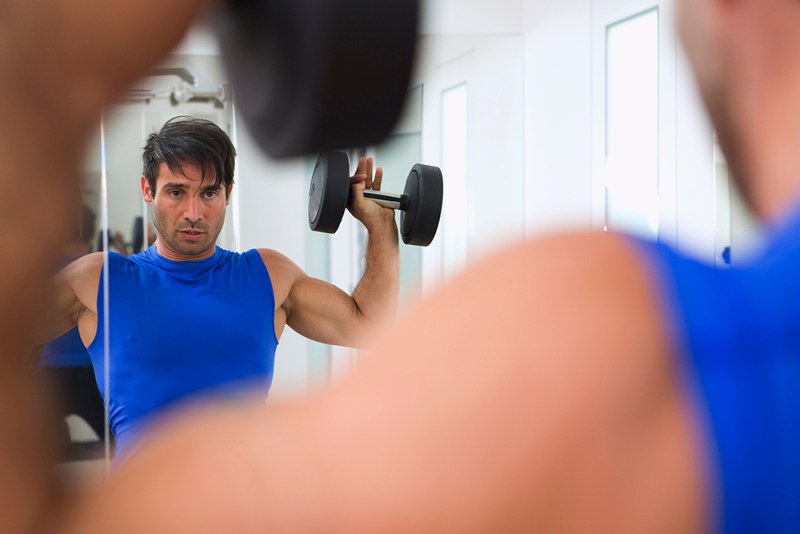
Arnold press
Muscles targeted: Anterior, medial, and posterior deltoids and rotator cuff
Reps: 12 to 15
Sets: 2 to 3
This exercise hits all three muscles in the deltoid and works on rotational movement through the press portion of the lift. It helps increase shoulder stability, hitting the inside shoulder muscles at the bottom of the lift. This is one of the best shoulder workouts for using the heavier weights you have lying around your home gym.
Start with a dumbbell in each hand, feet hip-distance apart, keeping your back straight and core activated. Hold the weights at the shoulders with your palms facing the body. Start by taking the elbows out wider, rotating the wrists so the palms face forward as you bring the weights straight up overhead, and then move back down through it.
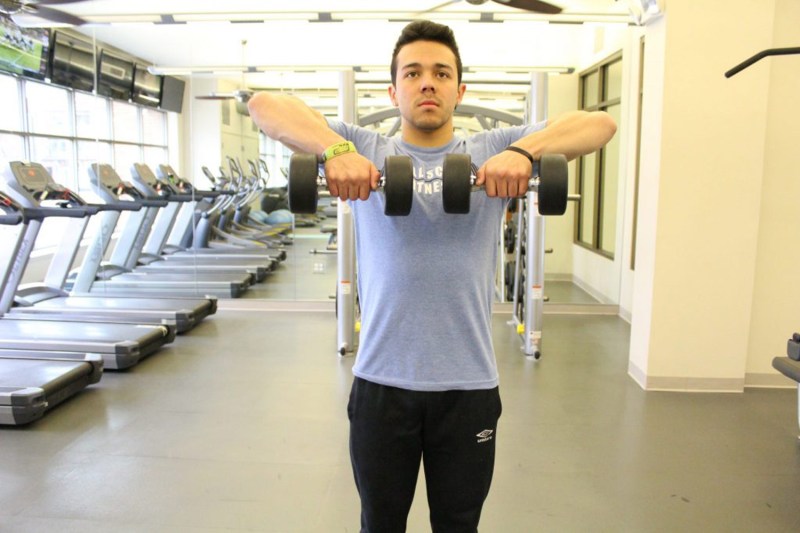
Upright row
Muscles targeted: Anterior, medial, and posterior deltoids and trapezius
Reps: 12 to 15
Sets: 2 to 3
This is one of the best shoulder exercises that can be done standing or seated and with heavier weights. Start by holding the weights in front of your thighs, palms facing the body. The feet should be hip- to shoulder-width apart, and you want to keep the weights close to your body as you pull them up toward your chest, letting the elbows flare out at about shoulder height. Bring the weights back down and repeat.
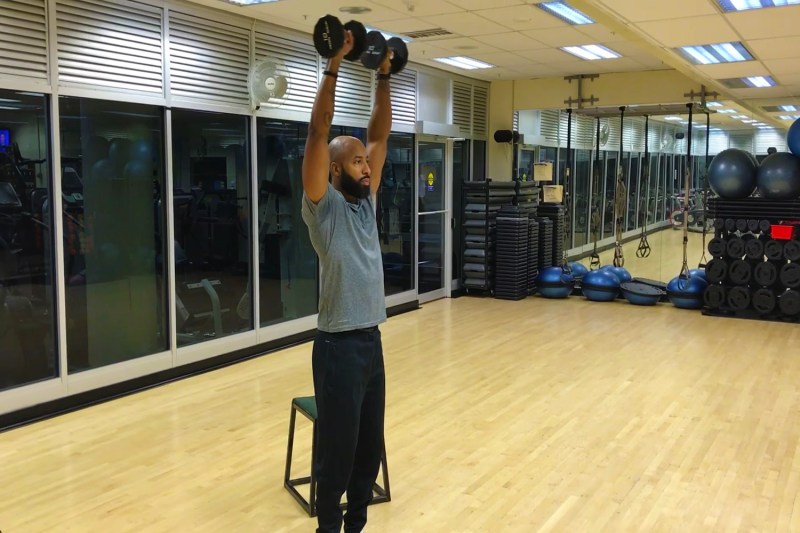
Circle press
Muscles targeted: Trapezius, latissimus dorsi, rhomboids, levator scapulae, anterior, medial, and posterior deltoids, rotator cuff, and teres major
Reps: 12 to 15
Sets: 2 to 3
In a standing position with the feet hip- to shoulder-width apart, start with a pair of low-weight dumbbells. Hold them against the thighs with the palms facing forward, away from the body. Bring the dumbbells out to the side of the body and up overhead, and then reverse the movement back down. Repeat.
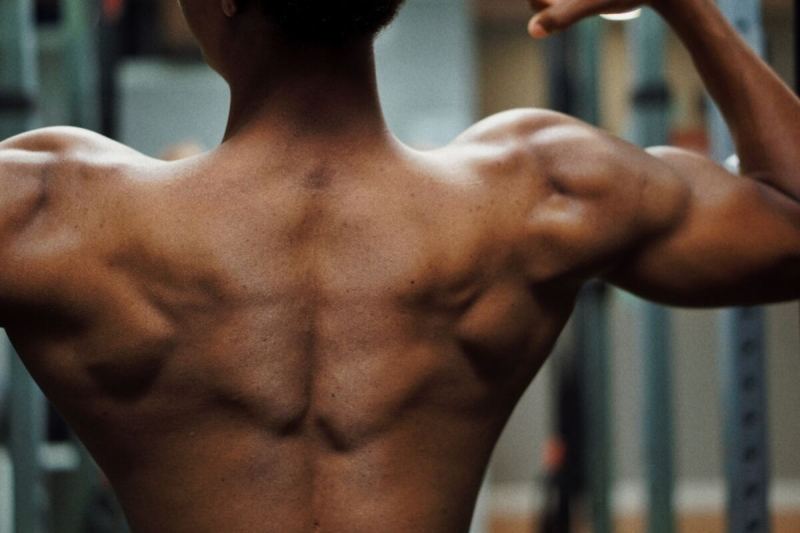
More shoulder exercises (using no equipment)
If you find yourself traveling or somewhere you’re unable to have weights and other equipment to work your shoulders, here are some shoulder exercises you can do with just your body weight.
Wall pushups
Stand facing a wall with your arms shoulder-width apart and your hands flat against the wall at shoulder height. Slowly bend your elbows and lower your chest toward the wall until your elbows are bent at a 90-degree angle. Push back up to the starting position.
Pike pushups
Start in a pushup position with your hands shoulder-width apart and your feet together. Walk your hands forward until your hips are in the air and your body is forming an inverted V shape. Slowly bend your elbows and lower your chest toward the ground, keeping your hips high. Push back up to the starting position.
Bear crawls
Begin in a pushup position with your hands shoulder-width apart and your knees directly below your hips. Lift your knees off the ground and keep your back flat. Move one hand forward and follow with the opposite foot, alternating sides and staying low to the ground.
Shoulder taps
Start in a pushup position with your hands shoulder-width apart. Keep your arms fully extended with your back flat and toes on the ground. Bring one hand up off the ground and tap the opposite shoulder. Rotate back and forth tapping one shoulder at a time.
Arm circles
Stand with your arms at your sides and make small circles forward with your arms. Gradually increase the size of the circles until your arms are fully extended. Reverse the direction and make small circles backward.
While most upper body workouts will hit the shoulders to a certain degree, adding specific exercises or specific shoulder training days that target them solely will help them grow faster. Making sure to hit all heads of the deltoids is crucial to the success of building the biggest shoulder at your gym. These exercises will help you get there.



